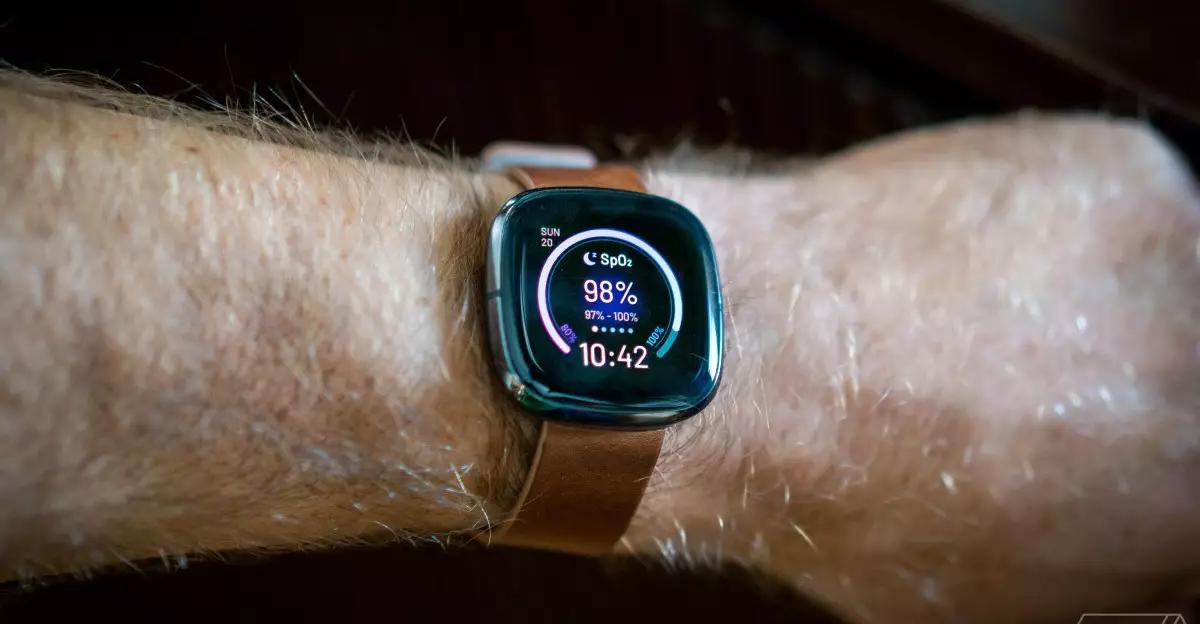In the realm of wearable technology, few brands have established such a solid reputation as Fitbit. Known for their fitness-focused devices that track everything from heart rate to sleep patterns, Fitbit has garnered a loyal customer base. However, recent developments surrounding the firmware update for the Versa 3 and Sense models have prompted significant backlash from users, raising questions about a critical trade-off: Is it acceptable for companies to sacrifice device functionality for consumer safety?
The upheaval began when Google, the parent company of Fitbit, mandated a firmware update designed to mitigate overheating concerns affecting a subset of users. While the intention behind the update was undoubtedly positive—preventing potential battery overheating incidents—it has emerged that this well-meaning solution has severely diminished the battery life of the devices affected. Complaints from users flooded online forums and social media, as many reported that their previously reliable devices now struggle to last a full day between charges.
The magnitude of the frustration expressed by Fitbit users cannot be overstated. A device that once comfortably lasted between two to six days is now rendered nearly useless, pushing users to the brink of dissatisfaction. For many, this stark change is about more than just the inconvenience of frequent charging; it speaks to broader trust issues between consumers and companies that provide tech products. It begs the question, why are consumers willing to tolerate such a drastic compromise in a feature for which they chose this product over competitors?
The situation is further complicated by the historical context of battery issues within Fitbit’s product range. The recent incident is not an isolated one—Fitbit has faced scrutiny in the past regarding safety complaints related to its devices. In fact, the company was fined $12 million after the Ionic watch’s battery problems resulted in thermal incidents affecting users. This historical backdrop amplifies current grievances, as users reflect on how long-standing quality control issues have persisted under Google’s ownership.
While it’s essential for tech companies to prioritize user safety over all else, the handling of this firmware issue raises questions about corporate responsibility. Google’s notice regarding the firmware update confirmed that battery life would be negatively impacted, but many users feel the compensation offered—a meager $50 credit—falls short of adequately addressing the discontent. For devices that cost significantly more, this gesture seems disingenuous and fails to comprehend the gravity of the inconvenience created for users.
Moreover, the lack of comprehensive communication from Google following this update leaves many unanswered questions. The absence of a detailed explanation or a proactive engagement strategy indicates a troubling trend in tech corporate behavior. Failing to address users’ concerns promptly can lead to a worse company reputation and increased consumer erosion of trust—a critical factor for a brand synonymous with customer loyalty in the tech market.
In an era where transparency and open dialogue between companies and consumers are increasingly expected, Fitbit’s recent communications failings may damage its long-term relationship with buyers. Tech companies that thrive typically emphasize clear communication channels, especially during frustrating events such as firmware updates or recalls. As social media amplifies user voices, companies must adapt, employing better strategies to explain their actions and streamline the resolution process for user issues.
If Fitbit neglects these lessons, not only will it lose the trust of existing customers, but potential newcomers may think twice before investing in future offerings. The wearables market is highly competitive, and with numerous alternatives available, a single misstep could lead to mass consumer migration. Fitbit’s existing consumer loyalty places it in a precarious position; a swift response and genuine engagement could stem the tide of disillusionment.
Ultimately, this situation underscores a significant tension woven throughout the fabric of the tech industry: the delicate balance between consumer safety and product performance. It is a reminder that while technological innovations are promising, accountability and responsible communication remain essential. For Fitbit, the road ahead demands introspection, a renewed commitment to quality, and, most importantly, understanding that its users deserve more than safety; they deserve reliability, trust, and confidence in their devices. The challenge is set, and how Fitbit navigates this incident will be telling of its future standing in the wearables landscape.

